His Majesty King Bhumibol Adulyadej The Great
Chapter 8: Royal Initiatives in Education within the School System
From 1946 to the present, various Acts related to education and the establishment of educational agencies have been enacted, according to the needs of educational management to align with national development.
His Majesty King Bhumibol Adulyadej the Great recognized the importance of education as a key factor in national development, as reflected in His Royal Speech on education delivered to teachers and students at Dusit Palace Hall on July 27, 1961:
“… Education is a factor in creating and developing knowledge, thinking, behavior, and morality of individuals. Any society or nation that provides comprehensive and appropriate education to its youth will have quality citizens capable of maintaining the stability and prosperity of the country and advancing it continuously …”
His Majesty the King also emphasized the significance of providing education to the people in His Royal Speech at the graduation ceremony of Srinakharinwirot University (Prasarnmit) on December 12, 1967, stating:
“… Work in the field of education is one of the most important tasks of the nation because the growth and decline of a country largely depend on the education of its citizens. It is well known that, at this time, our country’s population is rapidly increasing.
There are also some signs that parts of our population are declining in behavior and mindset, which is a worrying phenomenon. If it continues, we may not survive. Among the causes of this situation, the management of education certainly plays a part … We must strengthen educational work even more …”
His Majesty King Bhumibol Adulyadej the Great recognized the importance of both formal education in schools and non-formal education systems (details of non-formal education are covered in Chapter 9: Royal Initiatives in Non-Formal Education).
1.Education within the Formal School System
1.1 Chitralada School
Since His Majesty graciously ordered the establishment of a school within the Chitralada Royal Residence in 1958 and bestowed the name “Chitralada School” to serve as an educational institution for His Royal Highness and Her Royal Highness children, the royal policy regarding the school has been recorded in documents related to Chitralada School as follows:
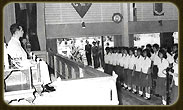
His Majesty King Bhumibol Adulyadej the Great consistently showed interest in the teaching and learning at the school and provided royal guidance in education for teachers to follow in several aspects. Regarding teaching, discipline, and the conduct of teachers, His Majesty stated:
“… Every teacher must consider themselves a true teacher, be just, and firm. Teachers should train students to be good learners, disciplined, responsible in their duties, punctual, focused in their work, capable of taking care of personal and public property, compassionate, considerate of others, and able to harmonize with the community. Teachers must not give special privileges to the royal sons and daughters …”
Regarding student admissions to Chitralada School, His Majesty gave guidance full of benevolence: “The school shall admit students from the general public without restriction to royal lineage.” He graciously allowed youth of all backgrounds to study at the school, without distinction of ethnicity, class, or status, so that students could gain knowledge according to their abilities and be trained in good conduct to become responsible citizens.
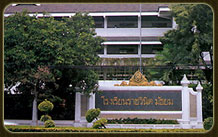
1.2 Schools under Royal Patronage
His Majesty King Bhumibol Adulyadej the Great placed certain schools under His royal patronage, known as schools under the Royal Patronage. He provided assistance and support, contributed royal funds, and regularly offered guidance. His Majesty also visited these schools and delivered royal speeches to offer encouragement and support to both teachers and students, whether the schools were government-run or privately operated, such as:
1.2.1 Rajavinit School
His Majesty King Bhumibol Adulyadej the Great conceived the establishment of Rajavinit School to admit children of royal household staff, government officials in the Royal Household Bureau, and the general public, providing education at the primary level (Grades 1–7) in 1964. In 1977, Rajavinit Secondary School was established. As for Rajavinit Bangkhae, a donor contributed 30 rai of land to His Majesty in 1970. Consequently, His Majesty graciously commanded the Ministry of Education to establish a coeducational secondary school on the site.
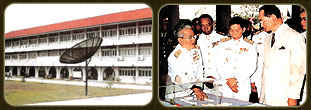
1.2.2 Wang Klai Kangwon School
Wang Klai Kangwon School, located in Hua Hin District, Prachuap Khiri Khan Province, was established with the royal permission of His Majesty King Ananda Mahidol, using annual funds from royal charity. The school was intended to provide education for the children of staff at Wang Klai Kangwon Palace, who were numerous but lacked educational facilities. It was established as a public school on June 20, 1938.
In 1983, the school administration set up a Early Childhood Development Center to provide education, training, and care for preschool children.
In 1984, the school administration coordinated with the Department of Vocational Education, Ministry of Education, to offer short-term vocational courses (225 hours), craft vocational certificate programs, and professional certificate courses. The courses were designed to consider local occupations as a priority, covering 17 different fields of study.
Wang Klai Kangwon School currently offers education from early childhood up to Grade 12 (Matthayom 6). His Majesty has provided annual royal funds of 1,200,000 baht for the school’s operations. The school serves as a model for semi-distance teaching, with a network of partner schools nationwide.
Khun Kwan Kaew Watcharothai recounted that the Ministry of Education, in collaboration with Wang Klai Kangwon School, implemented semi-distance education to commemorate the 50th anniversary of the King’s reign (1999: 869–887) as follows:
The Ministry of Education announced the extension of compulsory education from Grade 6 to Grade 9 (or Matthayom 3) during the 50th anniversary celebration. This meant extending compulsory education by three more years. Normally, students completing Grade 6 are about 12 years old. By reaching Matthayom 3, they are about 15 years old, meaning they have matured and improved their thinking and decision-making. If they continue to Matthayom 6, at around 18 years old, they become even more mature and capable of making sound and correct decisions.
Wang Klai Kangwon School in Hua Hin is a public school under His Majesty King Bhumibol Adulyadej the Great, with 1,900 students. The school admits children from age three and provides education up to the bachelor’s degree level. Wang Klai Kangwon Vocational College, under the Department of Vocational Education, supports short-term vocational courses, while the Wang Klai Kangwon campus of Rajamangala University offers diploma (Por Wor Sor) and bachelor’s degree programs. The school has been recognized by the Department of General Education, Ministry of Education, as a model school. The Minister of Education has established similar Wang Klai Kangwon-style schools at the royal residences in three other locations: Phuping Palace School in Chiang Mai, Phuphan Palace School in Sakon Nakhon Province, and Thaksin Ratchaniwet School in Narathiwat Province.
Wang Klai Kangwon School has received cooperation from the Ministry of Education to improve its standards considerably. The school provides support in sports, performing arts, Thai and international music, including both traditional piphat and brass bands, and military training. Nineteen government schools have assisted in its development. Being a public school under the King’s patronage, Wang Klai Kangwon serves as a central hub for distance learning for general education, transmitting lessons from Matthayom 1–6 to rural schools across Thailand, thus extending educational opportunities to the public.
The Department of General Education, Ministry of Education, broadcasts lessons via satellite for Matthayom 1–6 simultaneously, from raising the national flag to the end of the school day. This covers over 30,000 schools nationwide, including border patrol schools (RTSD) and Rajaprajanugroh schools in provinces, as well as Bangkok schools and private schools offering education up to Matthayom 3, such as Donwitthaya School and Boonwit School. Selected private schools in various provinces and pilot schools under the National Education Program (NEP) can extend classes up to Matthayom 6. Satellite-based education reduces the cost of constructing classrooms and hiring teachers, which are currently scarce resources.
1.2 3 Rajaprajanugroh Schools
The Minister of Education led senior officials from the Ministry to visit various provinces and observed children lacking warmth and proper care, as previously described. They respectfully requested royal permission to establish five more boarding schools, known as Suksa Songkroh Schools, in the following locations: Rong Kwang District, Phrae Province; Pa Sang District, Lamphun Province; Phon Phisai District, Nong Khai Province; Kham Khuean Kaeo District, Yasothon Province; and Mueang District, Sisaket Province. At that time, Rajaprajanugroh Schools were already under construction in Chun District, Phayao Province, and Nakhon Thai District, Phitsanulok Province. His Majesty graciously granted permission to build all five schools and provided funding from the Rajaprajanugroh Foundation for the construction of dormitories for boys and girls, kitchens, water tanks, and classroom buildings. The Ministry of Education immediately undertook the construction and received royal approval to name the schools “Rajaprajanugroh Schools.”
Currently, each school admits 250–300 students, and when fully completed, each will be able to accommodate up to 900 students. In 1994, His Majesty provided funds to establish seven Rajaprajanugroh Schools in seven provinces. By 2003, the network had expanded to include a total of 35 Rajaprajanugroh Schools.
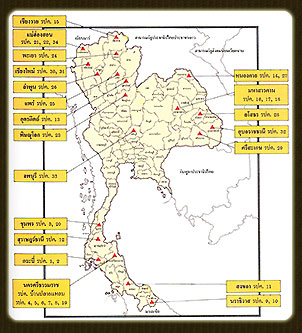
Map showing the locations of Rajaprajanugroh Schools under the Royal Patronage of the Rajaprajanugroh Foundation from 1963 to 2003, totaling 35 schools
(40 Years of the Rajaprajanugroh Foundation under the Royal Patronage, 1963–2003, 2003: 207)

His Majesty graciously presided over the opening of Rajaprasommai School building in Phra Pradaeng District, Samut Prakan Province.
His Majesty King Bhumibol Adulyadej the Great was concerned that these children might not receive proper guidance and education, and that their grandparents were already advanced in age. He therefore supported the Ministry of Education in establishing boarding schools to admit students from Grade 1, Matthayom 1, and Matthayom 4, known as Royal-Sponsored Suksa Songkroh Schools. Following the disaster in Phibun Kiriwong District, the 19th Rajaprajanugroh School was built in Thung Song District, Nakhon Si Thammarat Province. Upon its completion, His Majesty, together with Her Majesty the Queen, graciously presided over the opening ceremony. Currently, the school enrolls 600 students and implements training according to His Majesty’s royal guidance in every aspect: nurturing students to be good and compassionate, encouraging diligent study, and preparing them to secure employment to support themselves after graduation.
1.2.4 Rajaprasommai School
Rajaprasommai School, located in Phra Pradaeng District, Samut Prakan Province, was established according to His Majesty’s intention as a school for children born to patients with leprosy, who were separated from their parents. Although these children had not contracted leprosy, the Communicable Disease Control Act prohibited any school from admitting children of leprosy patients. His Majesty King Bhumibol Adulyadej the Great saw that, for the sake of fairness, these children should have the same rights and freedoms as other children. He provided personal royal funds to establish a boarding school in 1963, admitting the first cohort of 40 students with three teachers. Later, His Majesty graciously granted royal permission to establish the Rajaprasommai School Foundation to assume ownership of the school and register it as a private school, offering education from kindergarten through upper secondary level.
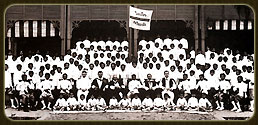
1.2.5 P.P.R. Rajavinit College
Originally named Rajavinit College, the school was established by royal decree of King Chulalongkorn (Rama V) as a boarding school to provide students with a comprehensive education following Western methods. Later, during the reign of King Prajadhipok (Rama VII), Rajavinit College merged with Mahadlek Luang School into a single institution under royal patronage and was renamed Vajiravudh College.
In 1964, teachers and students who were members of the Rajavinit Association wished to revive the name “Rajavinit College.” The Rajavinit Foundation for Education was established, with support from the Ministry of Education to set up a new school at the former location of Triam Udom Suksa Sampran. His Majesty King Bhumibol Adulyadej the Great and Her Majesty the Queen Mother graciously presided over the school’s opening on June 1, 1964, naming it P.P.R. Rajavinit College.
1.3 Schools for Rural Children
His Majesty King Bhumibol Adulyadej the Great showed great concern for the general education of the population, particularly for those living in border areas and remote regions. He was aware that many students were poor and lacked the necessary resources and materials to support their learning.
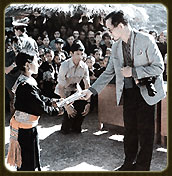
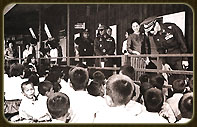
Therefore, whenever His Majesty King Bhumibol Adulyadej the Great and Her Majesty the Queen Mother, accompanied by the royal princes and princesses, visited these local communities, they would always visit the schools to provide educational materials, clothing, food, and scholarships. They also offered guidance to teachers to encourage students to diligently pursue knowledge and learning for their own benefit and for the development of their communities.
In the northern region, where there are many hill tribe children, His Majesty and Her Majesty the Queen Mother showed the same concern. They provided funds to establish schools for hill tribe children, employing border patrol police as teachers, and graciously named the schools “Chao Pho Luang Uppatham School” and “Chao Mae Luang Uppatham School.”
In addition, His Majesty King Bhumibol Adulyadej the Great and Her Majesty the Queen Mother personally provided royal funds to support soldiers serving in remote areas who collaborated with local communities to establish schools at both primary and secondary levels. These schools were named “Romklao Schools,” such as Romklao School at Ban Nong Kaen, Dong Luang Subdistrict, Na Kae District, Nakhon Phanom Province, which was the first Romklao School and provided primary education.
“When His Majesty the King and Her Majesty the Queen, accompanied by their two royal daughters, visited the people in Yi Ngo District, Narathiwat Province, it was brought to Their Majesties’ attention that students in Yi Ngo who wished to continue their education at the secondary level had to travel to the provincial center, resulting in significant time and financial burdens.
His Majesty the King conceived that if Ban Buke Kato School in Yi Ngo District, which was a primary school, could be upgraded to admit secondary-level students, it would greatly benefit the youth in the area. Surveying and improving the land to prevent flooding during the monsoon season should be undertaken by engineers from the 5th Army Region, while the construction of buildings and provision of equipment should be carried out by district officials in Yi Ngo. His Majesty would provide support in the form of materials and construction supplies.”
When this school was completed, the Ministry of Education officially opened it on April 28, 1975, under the name Yi Ngo School. Later, on July 3, 1975, His Majesty King Bhumibol Adulyadej the Great graciously bestowed the name “Romklao School.”
Other Romklao Schools established under His Majesty’s initiative include Romklao School in Kanchanaburi, located in Thong Pha Phum District, Kanchanaburi Province; Romklao School in Sakon Nakhon, located in Khok Si Suphan Subdistrict, Sakon Nakhon Province; and Romklao Prachinburi School, located in Na Dee District, Prachinburi Province.

Romklao School in Buriram Province is located in Han Sai District. Other Romklao Schools include those in Udon Thani Province, Loei Province, and Khao Kho, located in Khao Kho Subdistrict, Phetchabun Province. The Khao Kho school was completed in time for the royal celebration of His Majesty King Bhumibol Adulyadej the Great’s 60th birthday.
In addition to the schools under royal patronage mentioned above, the Department of General Education, Ministry of Education, established five Nawamintharachutit Schools to honor His Majesty the King on the occasion of his 60th birthday anniversary on December 5, 1987. The five Nawamintharachutit Schools were distributed geographically across the country, with one school in each region as follows:
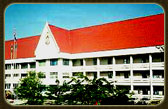
โรงรียนนวมินทราชูทิศ กรุงเทพมหานคร
ChatGPT said:
Bangkok: Nawamintharachutit Bangkok School, located on Amorn Wiwat Alley, Sukhaphiban 1 Road, Bang Kapi District, Bangkok.
Northeastern Region: Nawamintharachutit Isan School, located in Nai Mueang Subdistrict, Mueang District, Mukdahan Province.
Southern Region: Nawamintharachutit Thaksin School, located in Phawong Subdistrict, Mueang District, Songkhla Province.
Northern Region: Nawamintharachutit Phayap School, located in Mae Sa Subdistrict, Mae Rim District, Chiang Mai Province.
Central Region: Nawamintharachutit Matchim School, located in Wat Sai Subdistrict, Mueang District, Nakhon Sawan Province.
2. Promotion of Textbook Development
His Majesty King Bhumibol Adulyadej the Great conceived the idea of supporting textbook development. He graciously commanded the establishment of the Thai Encyclopedia Project for Youth, a series of knowledge books specifically created for children and young people in 1968. His Majesty’s concern was to provide learning opportunities for children and youth, especially those in remote areas who had limited access to continuous education in schools.
Because many parents were poor or had to frequently relocate for work, His Majesty wished to provide a set of knowledge books that these children and youth could read on their own. The books were intended to cover academic subjects across various fields, with an emphasis on topics related to Thailand, so that young readers could learn that their country was also advancing in universal academic knowledge. His Majesty conveyed his guidance and intentions to the team of teachers and experts, who responded by establishing the Thai Encyclopedia Project for Youth under the royal initiative.
Thai Encyclopedia Project for Youth
“… The primary and most important purpose of this encyclopedia is to instill in its readers the understanding that the world is a unified whole. The world of knowledge, the world of science, and the world of various academic disciplines are interconnected and interdependent. By gaining this perspective, one will develop the sense that their life belongs to the larger community and that they must strive to contribute to the common good. Arts and music must be integrated with science—something that most people do not easily understand—but by reading the encyclopedia, they will comprehend this connection and develop appreciation and respect …”
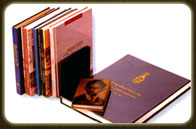
Objectives
The Thai Encyclopedia Project for Youth was initiated by His Majesty King Bhumibol Adulyadej the Great, with the intention of creating an encyclopedia with a distinctive format, different from any previously produced in Thailand or abroad. It is a general-purpose encyclopedia covering all branches of knowledge, with each topic written by an expert in the field. The content for each topic is divided into three levels: the first part is written in simple language with large print for young children; the second part increases the complexity and length of the content compared to the first part.
For children at the upper primary and lower secondary levels, the second part of each topic is designed. The third part contains more advanced and detailed content, suitable for upper secondary students and first-year college or university students.
Readers can choose any topic or level according to their interest and read it conveniently. This makes the encyclopedia a valuable educational resource, allowing people of all ages to enhance their knowledge independently. His Majesty King Bhumibol Adulyadej the Great expressed that the same book should be suitable for the entire family—older siblings helping younger ones, parents helping children—and usable in schools across all levels, from lower primary to upper secondary.
History
Under this royal initiative, His Majesty graciously commanded the establishment of the Thai Encyclopedia Project for Youth. A committee was formed, and His Majesty granted the first royal audience to the committee on July 16, 1968, to convey guidance on the objectives, concepts, and methods for creating the encyclopedia.
The committee planned and carried out the work step by step. Since His Majesty’s concept for this type of encyclopedia was entirely new, with no precedent in any country, the work required careful study, experimentation, and gradual implementation.
The first volume of the Thai Encyclopedia for Youth, completed in February 1973, included nine topics: the Sun, solar and lunar eclipses, the night sky, birds, fish, machinery, energy (its control and use), aircraft, and Thai music. The volume consisted of 284 pages and was printed for a royal gift edition of 5,000 copies. The retail price was 100 baht per copy, and the printing cost at the Kurusapa Printing House in Ladprao totaled 639,000 baht.
The Thai Encyclopedia for Youth, Volume 2 (January 1975) – Contains 10 topics: classification and categorization of animals, meteorology 1 – the atmosphere, meteorology 2 – weather observation, industry, sensory extension devices, great kings in Thai history, education, Bangkok, and Thai postage stamps. The volume has 254 pages and was printed as a royal gift edition of 5,000 copies and a sale edition of 7,000 copies. The retail price was 120 baht per copy, with a printing cost of 1,020,000 baht at Kurusapa Printing House, Ladprao.
Volume 3 (December 1975) – Contains 12 topics: rice, corn, cotton, rubber, woodworking, forest resources, forest products, weeds, cattle, elephants, lac, and lac cultivation.
Volume 4 (1978) – Contains 10 topics: bioluminescence, respiration, fluid balance in the body, viruses, weather phenomena, climate, trains, religion, foreign affairs in the Rattanakosin era, and the sequence of Thai monarchs.
Volume 5 (1980) – Contains 9 topics: vegetables, fruit trees, sugarcane, cassava, root crops, plant propagation, ducks, chickens, and forest tree species.
Volume 6 (1982) – Contains 15 topics in mathematics: basic mathematics, the history and development of set theory, logic, functions, equations and inequalities, points, lines, and surfaces, distance, area and volume, probability statistics, matrices, graphs, and mathematics in nature and art.
Volume 7 (1982) – Contains 8 topics: orchids, butterflies in Thailand, mulberry cultivation and silkworm raising, plant diseases, fish farming, irrigation, houses in Thailand, and telecommunications (part one).
Volume 8 (1983) – 7 topics: history of Thai medicine and pharmacy, anatomy and physiology, disease genesis, infant care and pediatric diseases, surgery and anesthesiology, blood and blood banking in Thailand, and accidents and first aid.
Volume 9 (1985) – 13 topics: drugs, obstetrics and gynecology, medical methods for fertility control, abortion, public health, cancer, radiology, teeth and gums, forensic medicine, rehabilitation medicine, nutrition, psychotropic drugs, and psychoactive substances.
Volume 10 (1987) – 10 topics: military medicine, infectious and tropical diseases, allergies, common dermatological diseases in Thailand, eye diseases, ENT, psychiatry and mental health, environment and health, exercise for health, and bone transplantation.
Volume 11 (1988) – 9 topics: computer evolution, computer components, computer operating systems, computer applications, computer-aided design, inventions from computer development, industrial robotics, effects of computer use, and Thai script development on computers.
Volume 12 (1988) – 10 topics: medicine, education, social welfare, hill tribe and highland agriculture development, rural agriculture development, cooperative development studies, water resources development, production factor development, and maps.
Volume 13 (1989) – 11 topics: Thai houses, rural life, traditional crafts, Thai painting, Thai dance, Thai dolls, Thai games, Thai food, vegetable and fruit crafting, freshwater prawn farming, and banks.
Volume 14 (1990) – Contains 10 topics: Palaces in Bangkok, Regional Palaces, Thai Sculpture, Animal Feed, Feed Crops, Forage Grass Cultivation, Sorghum, Biotechnology, Food Toxins and Contaminants, and Herbal Medicine.
Volume 15 (1991) – Contains 10 topics: Bees, Beekeeping of Thai Stingless Bees, Tobacco, Teak, Thai Textiles, Ancient Thai Communities (from aerial photographs), Wastewater, Solid Waste, Air Pollution, and Global Environmental Issues.
Volume 16 (1992) – Contains 10 topics: Restoration of Wat Phra Sri Rattana Satsadaram, The Tripitaka, Conservation of Historical Sites and Antiquities, Stone Inscriptions and Their Reading, Thai Society and Culture, Book Production, Music for Youth, Crafts and Artisan Villages, Agriculture, and Educational Rehabilitation for Youth with Disabilities.
Volume 17 (1993) – Contains 10 topics: White Elephants, Thai Prosody, Ecosystems and the Relationship Between Nature and Living Beings, Viral Hepatitis, Hazardous Waste, Human Settlements, Kenaf and Jute, Fiber Plants, Plant Breeding, and Wheat.
Volume 18 (1994) – Contains 10 topics: Environment and Human Settlements in Thailand, Royal and Folk Traditions, Thai Clothing, Law and Thai Society, History of Printing in Thailand, Thai Language and Script, Pesticides, Soil and Fertilizers, Pig Farming, and Agricultural Product Marketing Systems.
Volume 19 (1995) – Contains 9 topics: Natural Resource and Environmental Management, Oilseed Plants, Agricultural Product Preservation, Horses, Insects, Advanced Medical Technology Tools, Folk Wisdom, and Semiconductors.
Volume 20 (1995) – Contains 10 topics: Religion and Belief Systems in Thailand, Cultural Relations with Foreign Countries, Traditional Thai Painting, Sound and Noise Pollution, Laser, Solar Cells, Gemstones, Aviation Medicine, Immunodeficiency or AIDS, and Organ Transplantation.
Volume 21 (1996) – Contains 9 topics: Royal Processions, Thai Heroines, Thai Weaving Arts, Nielloware, Ceramics, Marketing and Export of Handicrafts, Local Botany, Natural Resource Conservation and Development, and the United Nations and Its Affiliates.
Volume 22 (1997) – Contains 9 topics: Linguistics, Thai Ceramics, Basketry, Thai Fragrant Flowers, Agricultural Machines and Simple Machines, Occupational Health, Thai Family, Benthic Marine Animals, and Airports.
Volume 23 (1998) – Contains 10 topics: Thai Wisdom, Thai Performing Arts (Classical Dance Drama), Folk Games, Economic History of Thailand, Ethnic Groups, Thai Ferns, Literary Wood (Part 1), Underwater Work, Radio Systems, and Beer Production.
Volume 24 (1999) – Contains 9 topics: Literary Heritage, Literary Wood (Part 2), Former Capitals of Thailand, Automobile Production, Motorcycle Production, Cement Production, Petroleum and Refining, Emerging and Re-emerging Infectious Diseases, and National Development Plans.
Volume 25 (2001) – Contains 8 topics: Basic Office Software, Evolution of Microcomputers, Internet, Early 21st Century Information Technology Trends, Database Systems, Artificial Neural Networks, Application of Thai Language in Computers, and Software Development.
Volume 26 (2002) – Contains 8 topics: Classification of animals in mangrove forests, factors influencing the diversity of animal populations in mangrove ecosystems, the relationship between fishery resources and mangrove ecosystems, the condition of mangroves in the Gulf of Thailand, mangrove degradation, shrimp farming or pond construction, and the restoration and planting of mangroves.
Volume 27 (2003) – Contains 9 topics: Traditional Thai performance (Likay), public administration, ecotourism, off-season fruit production techniques, hydroponics, the dangers of alcohol, aging, nuclear energy, and the genetic revolution.
Volume 28 (2004) – Contains 9 topics: Thai temples, the Phrachetupon inscription compilation, markets, durian, agricultural biotechnology, the hazards of smoking, nuclear power plants, plastics in modern life, and earthquakes.
All 28 volumes of the encyclopedia cover subjects in science, technology, humanities, social sciences, agriculture, medicine, mathematics, and more. Each topic is explained by experts and illustrated with images relevant to Thailand. Each volume also includes an index of terms and a guide to the topics covered.
At the start of the publication project, His Majesty King Bhumibol Adulyadej graciously provided personal funds for printing. Later, the Lions Clubs of District 350 Thailand contributed continuing support. Authors and staff from editorial, art, finance, management, and public relations departments devoted their knowledge, skills, and labor to fulfill His Majesty’s intention.
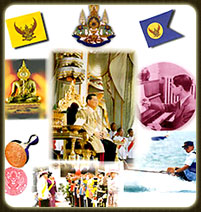
On the auspicious occasion of His Majesty King Bhumibol Adulyadej’s fifth cycle birthday, the project committee published a special volume of the Thai Encyclopedia for Youth. It covers knowledge from various fields used in development and social welfare projects initiated by His Majesty.
Hundreds of projects were personally overseen by His Majesty, even in remote areas, such as replacing opium cultivation with mountain crops. This encyclopedia presents the scientific principles he applied and summarizes the development projects initiated under his guidance.
The Thai Encyclopedia for Youth was graciously bestowed by His Majesty the King to schools in remote and underprivileged areas. Later, individuals who purchased the books also donated them to schools as a royal merit-making act. In 1987, on a highly auspicious occasion, the Ministry of Education purchased sets of these books and distributed them to nearly all primary schools, with the aim that eventually every school would receive a copy.
On the auspicious occasion of His Majesty King Bhumibol Adulyadej’s 75th birthday, the project committee published the Golden Jubilee Edition of the Thai Encyclopedia in 1999. It comprised nine categories covering topics such as the King’s biography and significant royal duties, the royal family, government agencies and organizations, foundations, scholarships and awards, schools, the King’s constitutional status and authority, royal ethics and religious activities, royal ceremonies during the current reign, royal insignia and related subjects, and miscellaneous topics.
3. Granting of Scholarships
His Majesty King Bhumibol Adulyadej recognized that modern advancements were playing an increasingly significant role in shaping the thoughts, mindset, and daily lives of the people. To keep pace with these developments, it was necessary, in part, to send individuals to study and observe in developed countries, so that the knowledge gained could be shared for the benefit of the nation and contribute to progress in various fields of science and technology. In conjunction with preparing foundational knowledge for those who would receive this advanced knowledge, His Majesty graciously provided personal funds to establish several scholarship funds. Each scholarship was created with a distinct purpose, such as:
3.1 The Ananda Mahidol Scholarship
His Majesty King Bhumibol Adulyadej graciously established a scholarship named the “Ananda Mahidol Scholarship” in 1955 (B.E. 2498) as a royal memorial to commemorate His Majesty King Ananda Mahidol, the previous monarch, and His Royal Highness Prince Mahidol Adulyadej, the Father of the Nation.
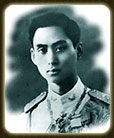
His Majesty King Ananda Mahidol
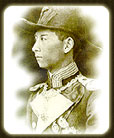
Somdet Phra Mahitaladhibesra Adulyadej Vikrom, the Royal Father
ChatGPT said:
His Majesty King Bhumibol Adulyadej recognized that Thailand would increasingly need experts in advanced technical fields. To cultivate leaders in these areas, He sought to encourage and support exceptionally talented students to study abroad in specialized disciplines. Upon completing their advanced studies and returning to Thailand, these scholars would serve as experts in their respective fields.
The Ananda Mahidol Scholarship was first granted to top-performing medical students to pursue further studies at universities in the United States. His Majesty’s intention for this scholarship is recorded in a royal address given to graduates at the medical university’s commencement ceremony on April 1, 1955:
“… I take this opportunity to explain the purpose of the scholarship I have provided to the Medical University. It is intended to support Thai students who have excelled in their medical studies, granting one student per year the opportunity to study medicine further abroad, thereby broadening their knowledge so that they may contribute to the welfare of the people …”
His Majesty then graciously authorized the registration of the Ananda Mahidol Scholarship as the “Ananda Mahidol Foundation” on April 2, 1959, providing an initial fund of 20,000 baht. As the need for experts in other fields grew, He expanded the foundation to offer scholarships in additional disciplines. Currently, scholarships are granted in medicine, science and engineering, agriculture, law, and humanities. A dedicated committee for each discipline selects outstanding graduates to study abroad in their field, with the aim of returning as experts, fulfilling His Majesty’s purpose.
From the foundation’s establishment in April 1959 until March 1986, a total of approximately 85 million baht was granted for scholarships. By June 1986, 105 scholars had completed their studies and returned, while 40 scholars were still studying abroad under the foundation’s support.
In addition, there is another royal scholarship known as the “Graduate Promotion Scholarship.” The Medical Department Committee considers that any physician who selflessly dedicates their time and effort to serve the public, without concern for personal hardship or gain, may receive the Graduate Promotion Scholarship, granting 6,000 baht per month to help cover their living expenses.
This scholarship was first established in July 1980. By 1986, ten individuals had been granted this scholarship. Beyond supporting education, the Ananda Mahidol Foundation also promotes specialized medical research, including studies in hematology, neurological diseases, medical investigations, orthopedic research, and hormone research, among other areas.
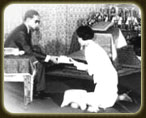
The Ananda Mahidol Foundation was graciously established by His Majesty King Bhumibol Adulyadej with the intention of cultivating a group of individuals possessing advanced knowledge and expertise in various academic fields. These individuals were expected to use their knowledge to lead and develop centers of advanced study in their respective disciplines within the country. Those who received the royal scholarships have conducted themselves in full accordance with His Majesty’s intentions.
3.2 Royal Scholarship (King’s Scholarship)
His Majesty King Bhumibol Adulyadej also aimed to revive the “Royal Scholarship” or “King’s Scholarship,” originally granted by King Chulalongkorn to send students abroad for further study. A formal examination system was established, and the name “Royal Scholarship” was officially adopted in 1897 (B.E. 2440). The awarding of the Royal Scholarship continued through the reign of King Prajadhipok. However, following the 1932 revolution, the scholarship program was discontinued. His Majesty’s initiative to revive the Royal Scholarship is recorded in the Government Gazette, Vol. 82, Part 16, 1965 (B.E. 2508), page 93, stating:
“… Originally, the Royal Scholarship was granted for study abroad to students who had completed their full secondary education. Upon completion, these scholars returned to serve in government positions and became key contributors to national development. Later, however, the awarding of the Royal Scholarship was discontinued. It was deemed appropriate to reinstate this program …”
The Cabinet considered His Majesty’s initiative and resolved to revive the Royal Scholarship through the announcement of the “Regulations of the Civil Service Commission on the Royal Scholarship, B.E. 2508 (1965).”
The Royal Scholarship is a royal grant for outstanding senior high school students in the general education track under the Ministry of Education, awarded annually to nine students. The scholarships are divided into three categories: three in Arts, three in Science, and three in General Studies. These scholarships support undergraduate studies and carry no obligation to return to government service.
From B.E. 2508 (1965) to B.E. 2529 (1986), a total of 97 students received the Royal Scholarship for undergraduate study both abroad and in Thailand.
For postgraduate studies, the Royal Scholarship was extended from B.E. 2514 (1971) on the auspicious occasion of the Silver Jubilee of His Majesty’s reign. The Office of the National Education Commission, under the Prime Minister’s Office, established scholarships for Master’s and Doctoral level study for students with outstanding academic performance at the Asian Institute of Technology, including both Thai and international students. Currently, 16 Royal Scholarships are awarded annually at the Asian Institute of Technology, each valued at 220,000 baht per year.
From B.E. 2514 (1971) to B.E. 2530 (1987), a total of 173 students received the Royal Scholarship for postgraduate studies, including 156 at the Master’s level and 17 at the Doctoral level. Of these recipients, 45 were Thai students and 128 were international students.
Through His Majesty’s boundless royal benevolence in restoring the Royal Scholarship and granting it to both Thai and international students, recipients have been deeply honored and gratified. Foreign students, in particular, have consistently expressed their admiration and remembrance of His Majesty King Bhumibol Adulyadej’s kindness, often praising His benevolence whenever they meet Thais in various places.
3.3 Scholarships for Families Affected by Public Disasters
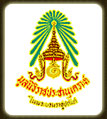
ChatGPT said:
His Majesty King Bhumibol Adulyadej graciously established the “Ratchaprachanukroh Foundation” with the royal intention that the foundation’s funds be used to provide immediate relief to those affected by public disasters throughout the country. Such disasters often result in large numbers of orphaned and destitute children, particularly those of school age. Therefore, His Majesty also graciously established scholarships under the Ratchaprachanukroh Foundation for students whose parents or guardians have passed away due to public disasters, ensuring that these children can continue their education to the fullest extent possible.
From 1966 to 1986, a total of 139 students received scholarships from the Ratchaprachanukroh Foundation and completed their studies at various levels: 22 at the bachelor’s degree level, 65 at vocational education level, and 48 at secondary school level. In the 1986 academic year, 43 students were still pursuing their studies at various levels. Those who have completed their education have established careers and earned sufficient income to support themselves and their families, thus becoming a continuing strength for the nation.
3.4 Scholarships for Underprivileged Students
Regarding scholarships for underprivileged students, His Majesty King Bhumibol Adulyadej graciously established the “Nawarith Scholarship Fund” under the Foundation for Assisting Underprivileged Students. The fund aims to support students who have completed compulsory education with good academic performance and conduct but lack financial resources, giving them the opportunity to continue their studies at various levels, including secondary school, vocational education, teacher training, and higher education. From 1965 to 1986, the Nawarith Scholarship Committee selected recipients who successfully completed their education at schools and colleges across the country, totaling over 2,400 students. In the 1986 academic year, 332 students were awarded the scholarship.
Additionally, His Majesty generously provided educational support to children from families in severe hardship or without guardians, such as orphans, by accepting them as students under the Royal Patronage. Each year, the number of these students increased. In 1986, His Majesty granted over 3 million baht to cover educational expenses for students under Royal Patronage.
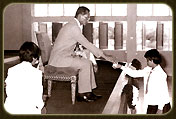
3.5 Royal Awards for Outstanding Students and Schools
His Majesty King Bhumibol Adulyadej graciously conferred awards to encourage students and educational institutions. The Royal Awards for Outstanding Students and Schools were first established in 1964 and are divided into two categories: awards for individual students and awards for schools.
For the 1985 academic year, Royal Awards were granted to outstanding students in three levels: elementary, lower secondary, and upper secondary. Students were selected based on exemplary behavior, excellent academic performance, and top exam scores, from small, medium, and large schools across all educational districts nationwide. A total of 111 students received the Royal Awards: 39 elementary, 39 lower secondary, and 33 upper secondary students.
For the school category, schools demonstrating outstanding educational standards were selected from all districts. A total of 80 schools received the Royal Awards: 40 elementary schools and 40 secondary schools.
3.6 Royal Scholarships for Specific Schools
In addition to general scholarships, His Majesty King Bhumibol Adulyadej graciously granted scholarships specifically for certain schools. These included scholarships for excellent students and students with financial need at Rajaprajanugroh School (“Nomklao Scholarship”), Rajavinit School, Wang Klaikangwon School, and the “Phumiphon Scholarship” to support and promote education for students with good academic performance but limited financial resources. Scholarships were also awarded as prizes for academic excellence and Thai writing contests at Chulalongkorn University and Thammasat University. Later, the scholarships were extended to additional higher education institutions, including Mahidol University, Silpakorn University, Srinakharinwirot University, and Kasetsart University.
3.7 Foundation for Supporting Senior Teachers
The Foundation for Supporting Senior Teachers is an important educational initiative. His Majesty King Bhumibol Adulyadej graciously provided 100,000 baht of his personal funds to establish the foundation in 1962. Its purpose is to honor and provide support for senior teachers. Eligible senior teachers are members of the Teachers’ Council who have served as educators for at least 30 years and reached the age of 60.
Senior teachers must have a consistent record of good teaching, exemplary behavior in accordance with professional traditions, and no history of misconduct. Regardless of their rank or position, the foundation presents all eligible senior teachers with an honorary emblem to recognize and celebrate their lifelong contributions. Furthermore, if a senior teacher is found to be truly impoverished or without support in later life, the foundation provides a suitable monetary grant to assist with living expenses.

His Majesty King Bhumibol Adulyadej showed boundless benevolence toward senior teachers. He graciously granted them audiences at the royal court and annually bestowed honorary emblems in recognition of their service. From the establishment of the Foundation for the Support of Senior Teachers under Royal Patronage in 1967 until 1986, a period of 20 years, a total of 18,238 senior teachers received honorary emblems, and among them, 946 teachers were also provided financial assistance, amounting to 7,568,000 baht.
This royal benevolence has served as an encouragement and inspiration for teachers to diligently pursue their profession, thereby benefiting the nation’s youth.
The various scholarships graciously conferred by His Majesty King Bhumibol Adulyadej clearly reflect His deep concern for the education of the people. They also demonstrate His Majesty’s intent to emphasize the value of education, as expressed in a royal address given to the Board of Trustees of the Ratchawinit School Scholarship Fund and the students who received the royal scholarships at Chitralada Royal Villa on Monday, 26 July 1971, which stated:

